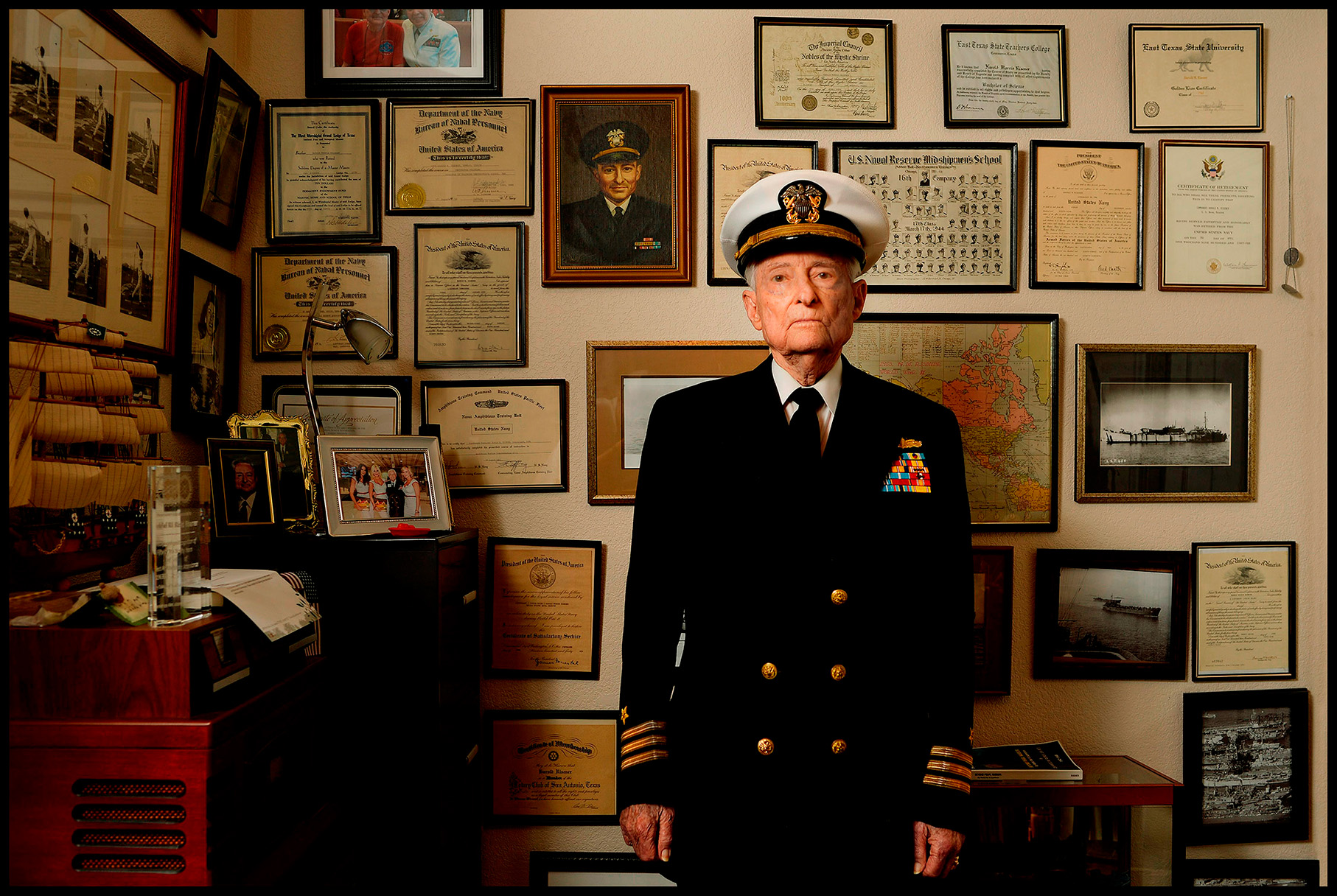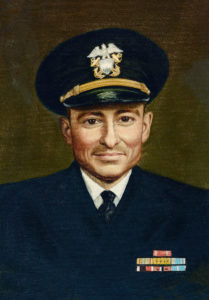
Harold Risener
LST Commander
Harold Risener
Commander, U.S. Navy, Ret.
1942–1962

Lt. Harold Risener
Japan, 1945
One sight I will never forget is the Army trucks bringing bodies of men killed in battle and stacking them on the beach.
I was born April 3, 1924 in my grandparents’ home just north of Greenville, Texas. My dad had a cotton farm, and Audie Murphy picked cotton for him. At 15, I graduated Cum Laude from Greenville High School and enrolled at East Texas Teachers College in Commerce, now Texas A&M. I joined the Navy in November, 1942. They had a program where you could attend college, get a degree and become an officer after two years. I wanted to command a ship and qualified for that program; I graduated in March, 1944.
I was ordered to New Orleans to be a navigator on the LST 605 (Landing Ship, Tank). Before we left New Orleans, we were rammed by a merchant ship and stayed in dry dock two extra weeks for repair. We were scheduled to be in the Atlantic Fleet and participate in the D-Day invasion, but due to the delay we were put in the Pacific Fleet. We arrived at Pearl Harbor, and though the bombing had been over 2 ½ years earlier, there was still plenty of evidence of the attack. The USS Arizona was at the bottom of the harbor with some of her hull still visible above water.
We loaded on board 500 Army enlisted men, 30 officers and their equipment. We were in the convoy that took MacArthur back to the Philippines. We made four major invasions. One sight I will never forget is the Army trucks bringing bodies of men killed in battle and stacking them on the beach.
From the Philippines, we sailed to Mindoro in a convoy to deliver supplies. While at Mindoro, a kamikaze crashed into our bow and killed 18 men. We buried our dead in the Sulu Sea on the way back to Leyte. This was a sad occasion, for we were burying friends and shipmates. We arrived back in the Philippines to an interesting welcome. Our ship was reported as missing in action. We were scheduled to participate in the invasion of Iwo Jima, but our captain convinced the brass we had not recovered from the Mindoro incident. We received orders to participate in the invasion of the Philippine Island of Luzon. We beached and unloaded more Army personnel and their equipment, and a huge crate of carrier pigeons for communication.
Our next invasion was Okinawa in early May, 1945. This was a large invasion force with many ships which meant many kamikazes. It was probably the loss of more ships and personnel in the history of the Navy. Soon after, we heard that two devastating bombs were dropped on Japanese cities. We were optimistic that the war would be over and we wouldn’t have to invade Japan.
On September 2, 1945 the 605 and several other ships entered Tokyo Bay for the official surrender ceremony aboard the USS Missouri. It was an impressive sight as the arrival of all the ships took two days. It was very surprising to witness such a tremendous city of ships. It was even more spectacular at night.
We returned to Pearl Harbor on January 2, 1946. I had orders to take command of the LST 459; I was only 21 years old. We left Pearl on January 17 and headed back to the good old USA! It seemed like an eternity since I had been there.
After serving in the Korean War, I completed 20 years of service in the Navy and retired as a commander. I was in the fire sprinkler business in San Antonio for over 30 years. My lovely wife Bennie and I were married for 67 years. {09-08-2015 • San Antonio, TX}